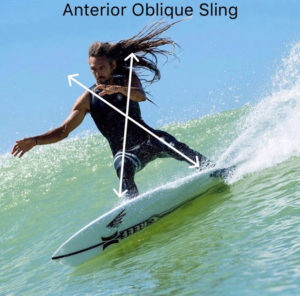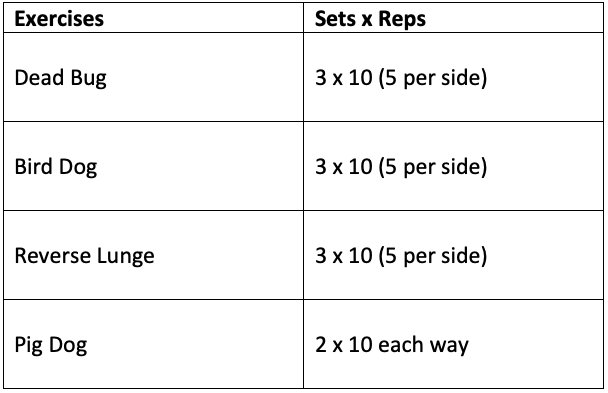TRAINING TO CONNECT
(with your mind, body and surfing)
PART 1: Training the Mind to Connect with the Body
PART 2: Training the Body to Connect with the Mind
In PART 1 of this series, we introduced the foundations of neuroscience and explained how your thoughts, actions and habits influence the body and surfing potential.
In PART 2 we teach a new model for looking at movement of the human body. The exercises at the bottom will train your body to move with connection and flow.
Before training connection, we need to re-think the way the success of a land based training session is measured. People will often refer to things such as how much pain they had the day after or how much sweat they produced.
When the goal is to transfer land based training to surfing performance, the above standards are not helpful. Remember that training for aerobic conditioning is different to training for connection.
The purpose of this article is to train the mind body connection as opposed to training aerobic conditioning. Training aerobic conditioning or “cardiovascular fitness” is best done via surfing frequently and in a vatiety of conditions. If this is not possible then specific aerobic based training can be helpful e.g. swimming, rower, stationary bike.
Most of us know some basic anatomy and have been taught to think of the body as separate, individual muscle groups e.g. the bicep, calf, pecs. This is what is taught to the medical system, personal trainers, physiotherapists. As this is what is taught to those that also teach it is the main information given to the public.
This model of anatomy provides a good foundation of muscle groups and function. What it doesn’t do is explain the connections that exist between more distant parts of the body. The best model to explain this is through the use of “muscle slings”.
These are separate muscle groups connected by fascia. Fascia is defined as “a sheet of connective tissue covering or binding together body structures (Myers 2013). This binding together of muscles is how one muscle group will affect another separate and far away group.
It has been shown that there is is communication and force transfer between various “sling systems” in the body (Willard 2012). Training the slings is how we train for connection. We are training the mind body connection by training the brain how to link these different muscle groups to work together.
The order of muscle contraction, the level of contraction and the timing between muscle groups is the key to unlocking flow, freedom of movement and effortless power. The added bonus here is efficiency – you make things easier. Think of it like taking the hand break off your body. In the long run this means less wear and tear, strain and a longer surfing career.
Another very important but mostly unrecognised model called “The Spinal Engine” was proposed in 1988 by Serge Gracovetsky. This theory proposes that spinal rotation and the muscle systems around the low back/pelvis are at the base of all human movement. The limbs amplify the movement that originates in the muscles of the spine and trunk.
This is why we start by training the connections around the centre of the body – the pelvis and the core. The more centred we are and the more we move from here, the easier it becomes to express fluid movement throughout the body.
Continue reading to understand 2 of the foundational muscle slings for surfing and how to train them.
The Anterior Oblique Sling
 Exercises to Connect the AOS
Exercises to Connect the AOS
Instructions
1. Adopt a surf stance
2. Reach rear hand towards the inside of your front foot.
3. Hold in the bottom position for 3 seconds adopting your best “pig dog” stance
4. Slowly stand back up to the start position
Dead Bug
Instructions
1. Begin laying on your back with the hips and knees at 90 degree angles. The arms will be directly above the shoulders
2. Extend one leg and the opposite arm at the same time i.e. right leg / left arm
3. Return to start position and repeat on the opposite side
ProTips:
– Slow movements are better to create connection
– Keep lower back flat throughout
– Start with half repetitions or shorter movements if any history of back pain or clicking feeling through the hips
The Posterior Oblique Sling
Exercises to Connect the POS
Bird Dog
 Instructions
Instructions
1. Begin on hands and knees. Knees are directly below the hips and wrists below shoulders
2. Slowly extend opposite arm and leg at the same time i.e. left leg / right arm
3. Return to start position and repeat on the opposite side
ProTips:
• Imagine reaching arm and leg away from one another rather than upwards
• Avoid overextending through lower back – visualise balancing a bintang on your lower back
Reverse Lunge
Instructions
1. Begin standing in a relaxed posture with feet shoulder width apart
2. Step backwards into a lunge – slight bend in the rear knee
3. Reach arm of the rear leg across the body and press back of the hand against your knee
4. Keep the hand pressed against knee to drive rotation in upper body and open through the chest. Keep eyes following your hand as you rotate
ProTip
• Keep eyes relaxed
• Avoid shrugging the shoulders
Putting it all together
• The above exercises can be performed as a stand alone workout or incorporated as part of a pre surf warm-up
• For a connection workout follow the sample session below
• For a warm up on the beach you can simply do one set of each movement to prime your body for the relevant surfing movements
Sample Connection Session
By Scott Johnstone (DPT, BAppSc(ExSS)
@the_surf_physio











